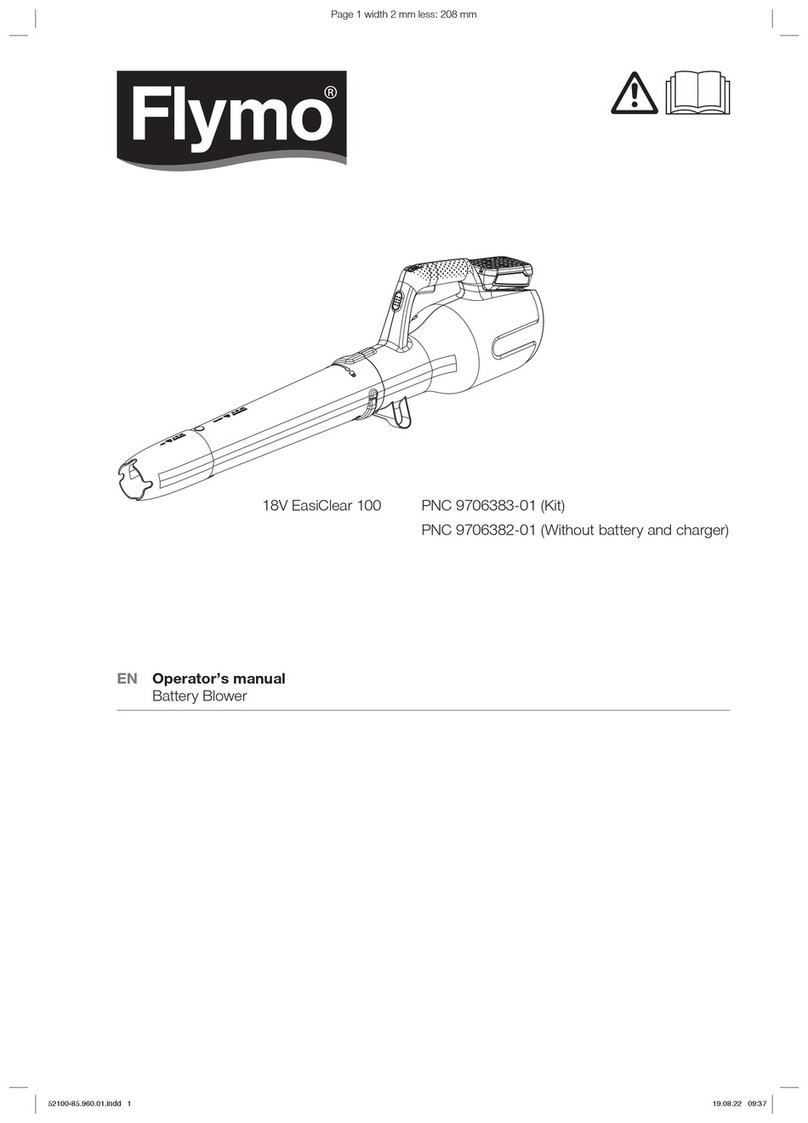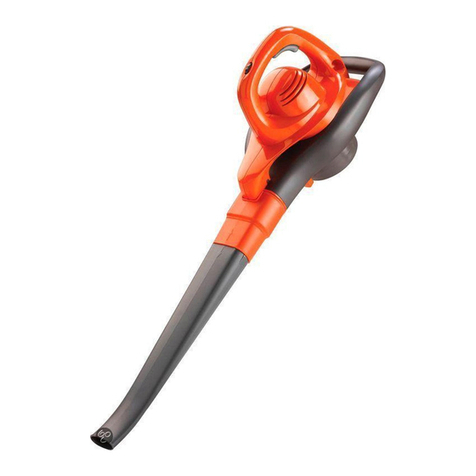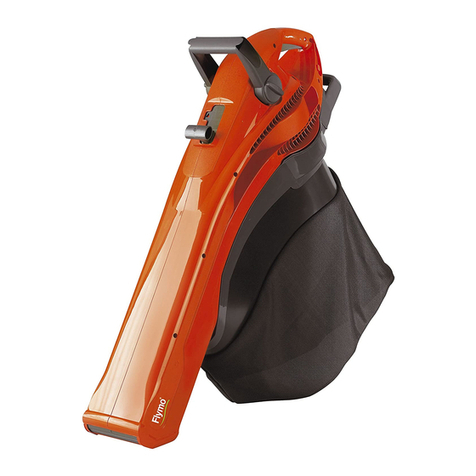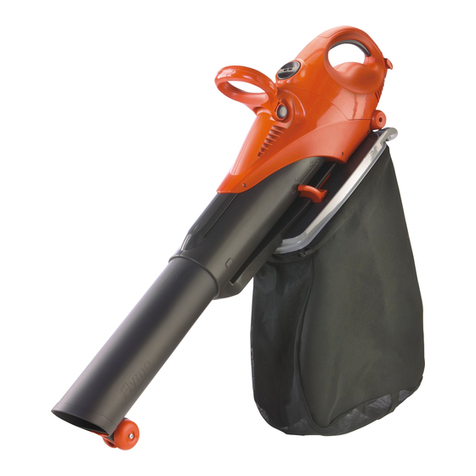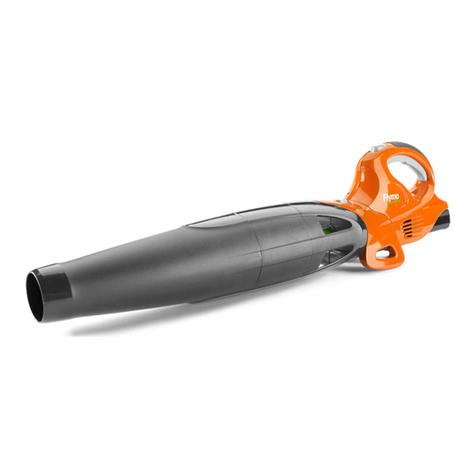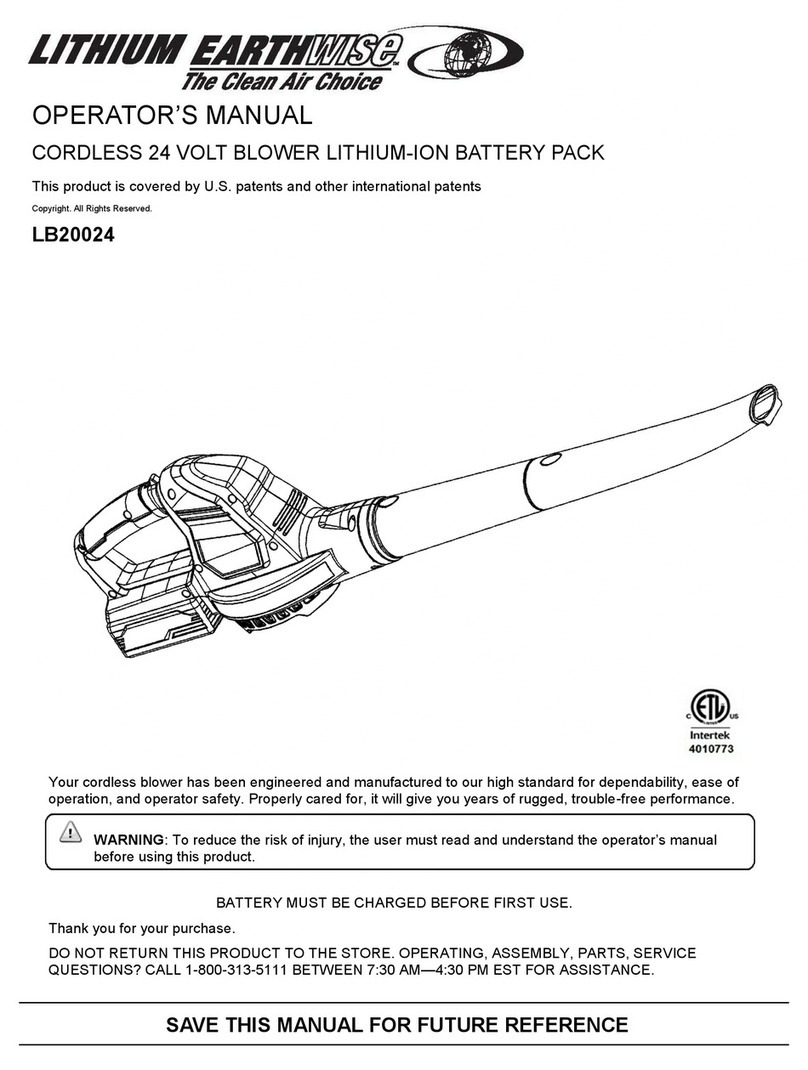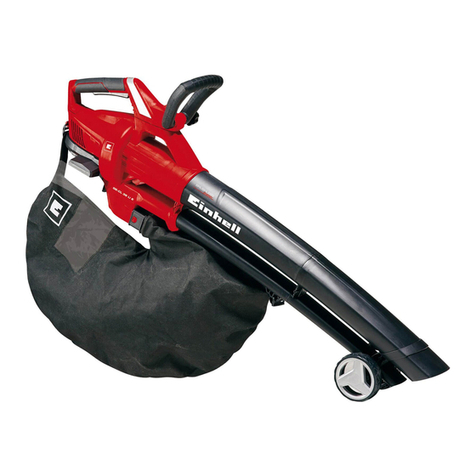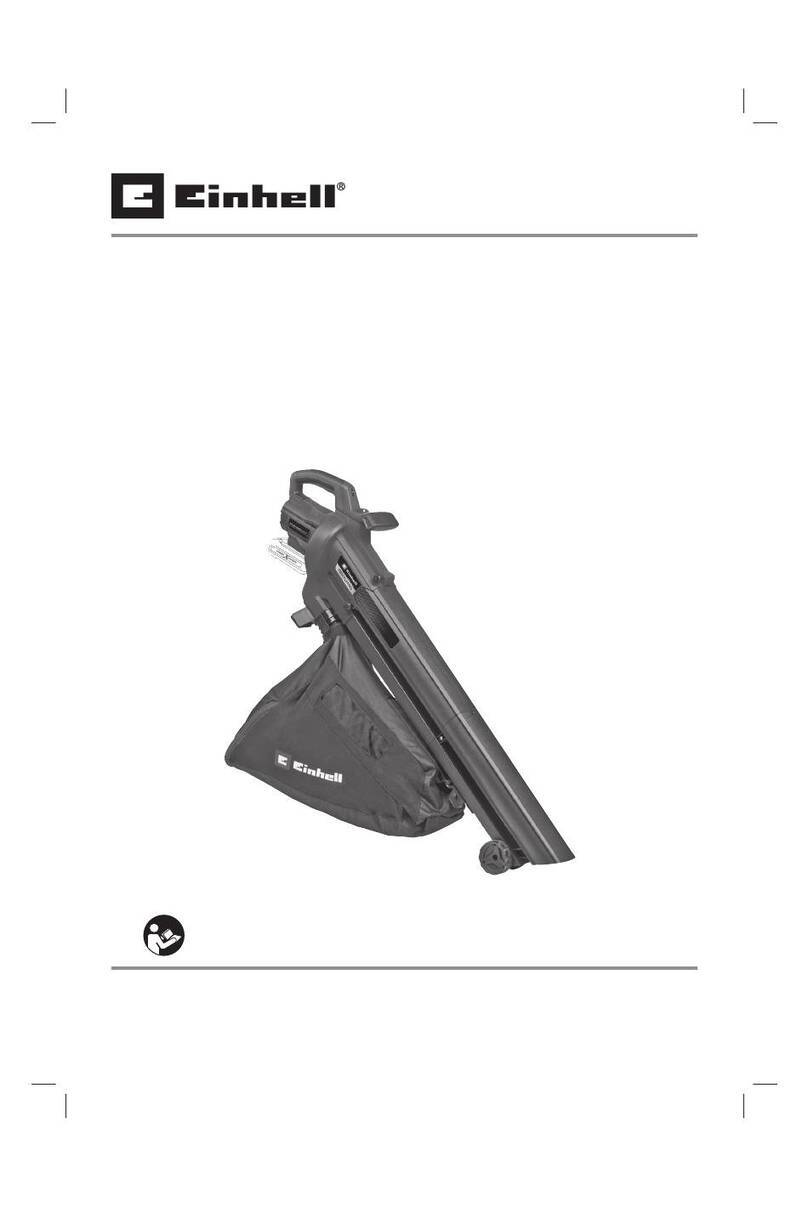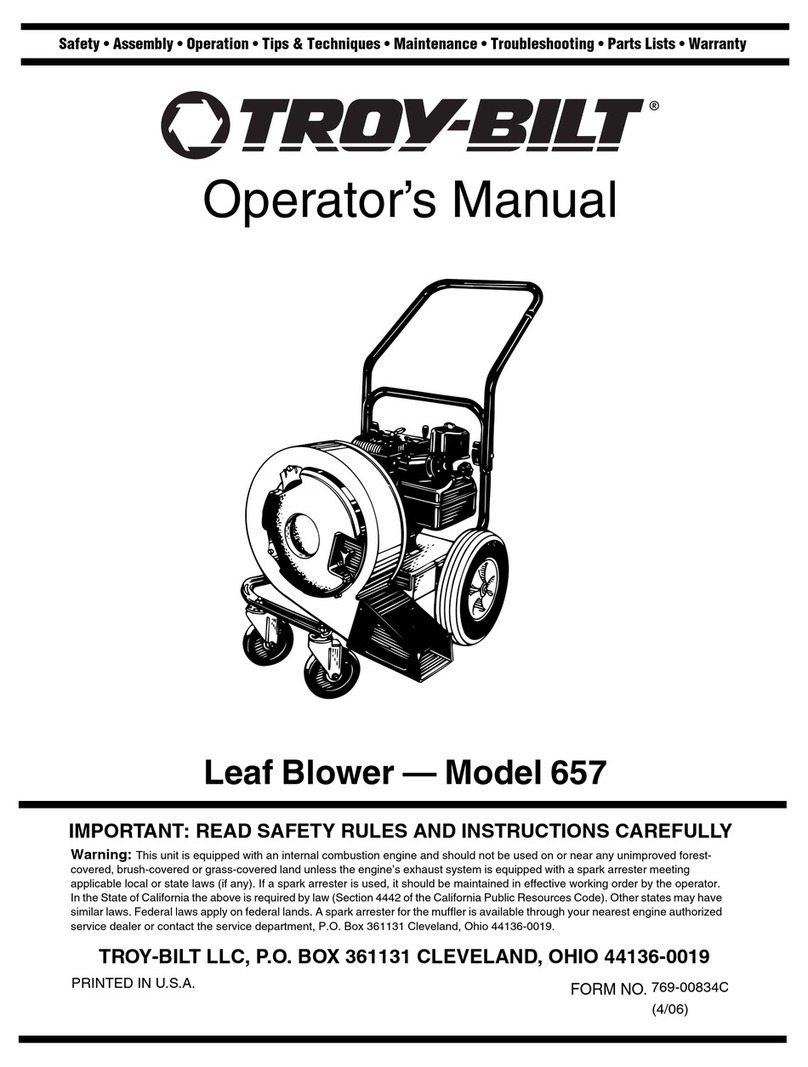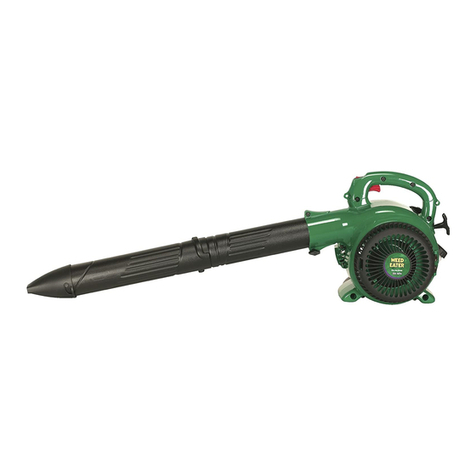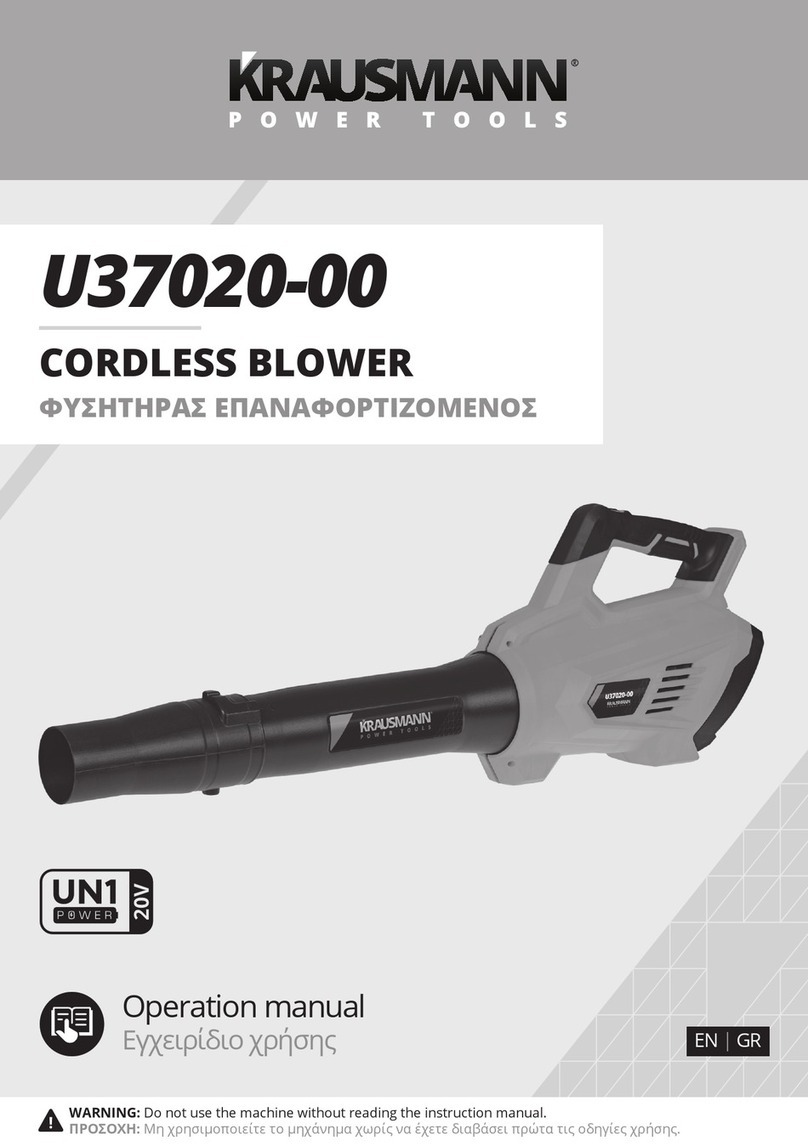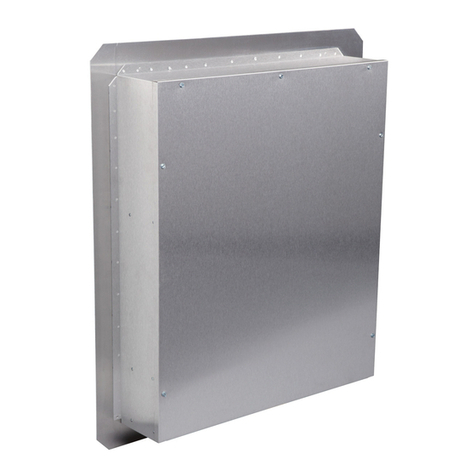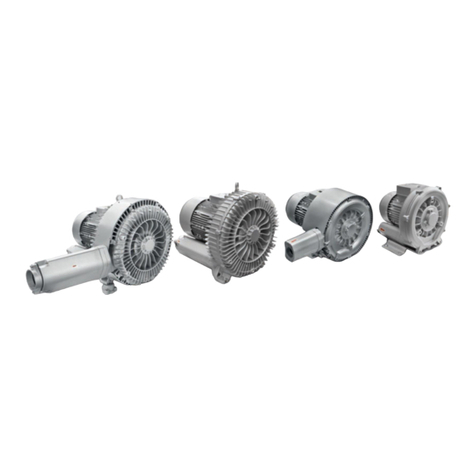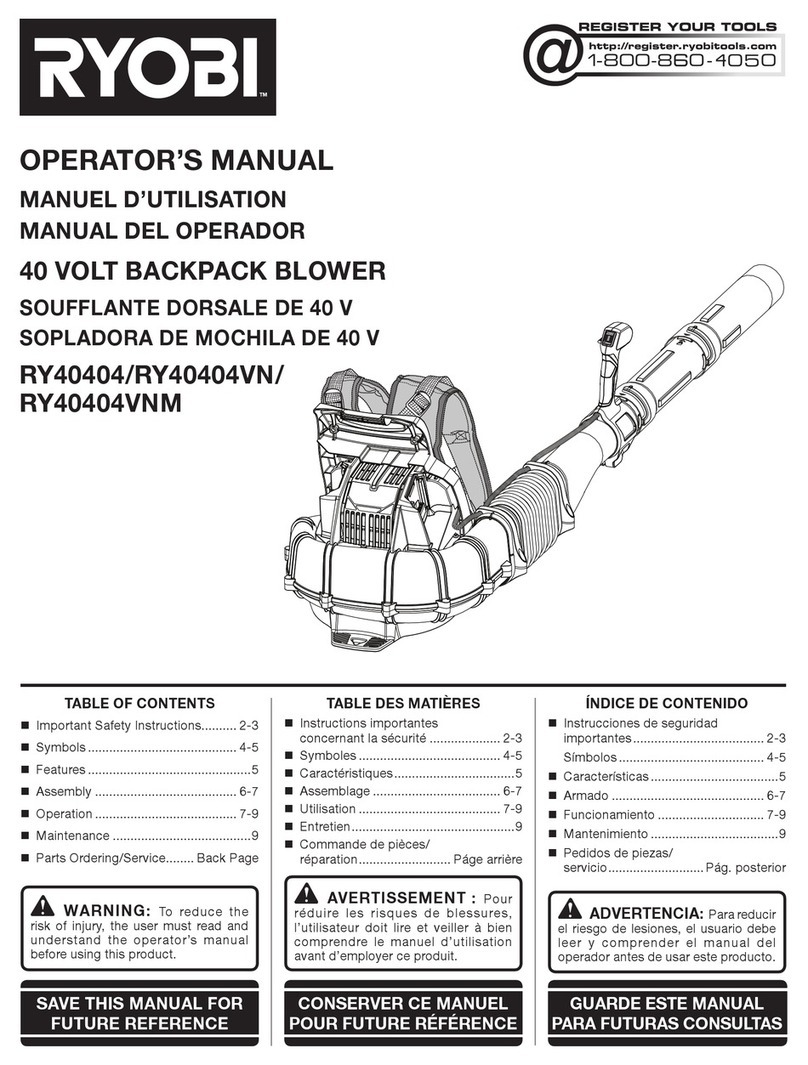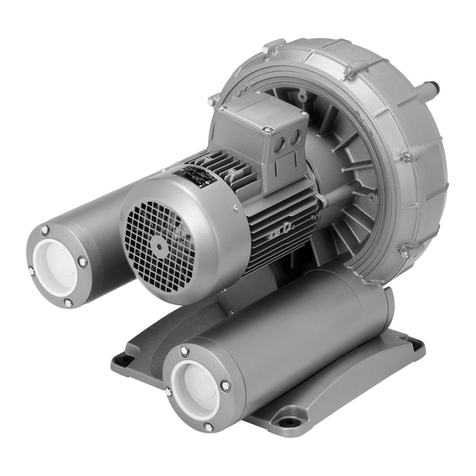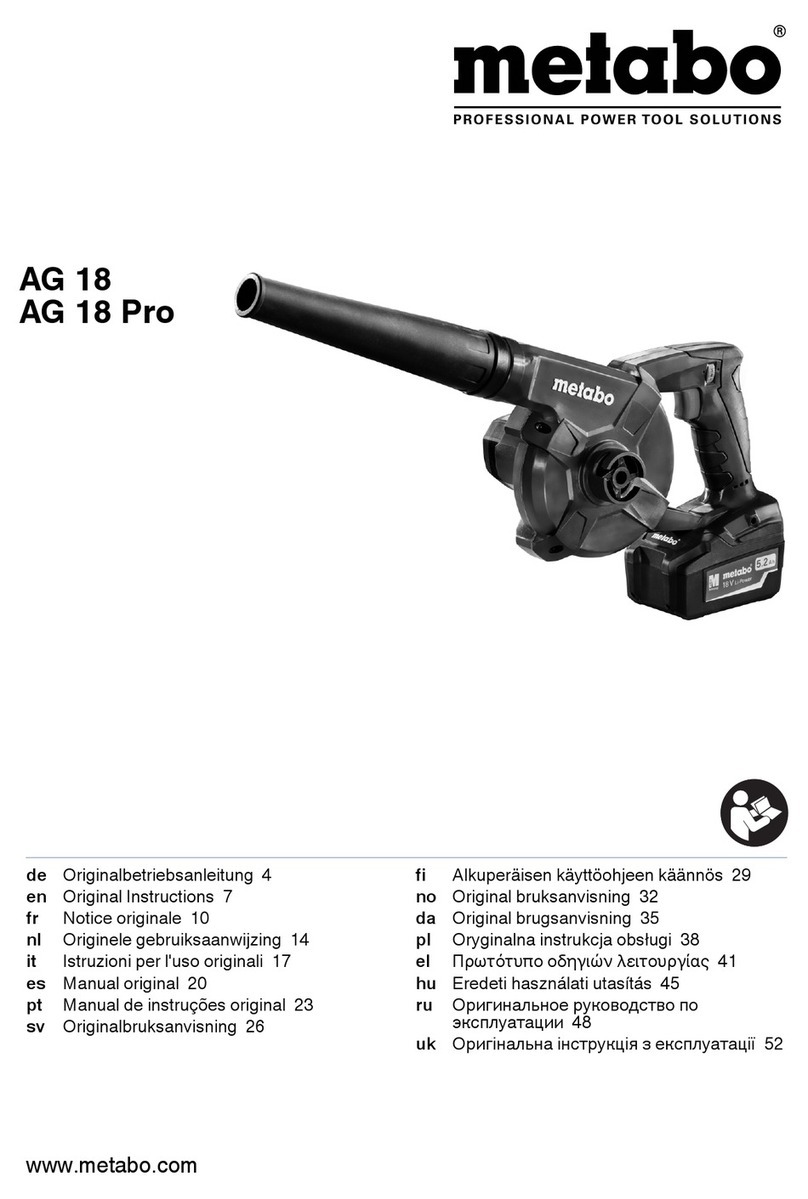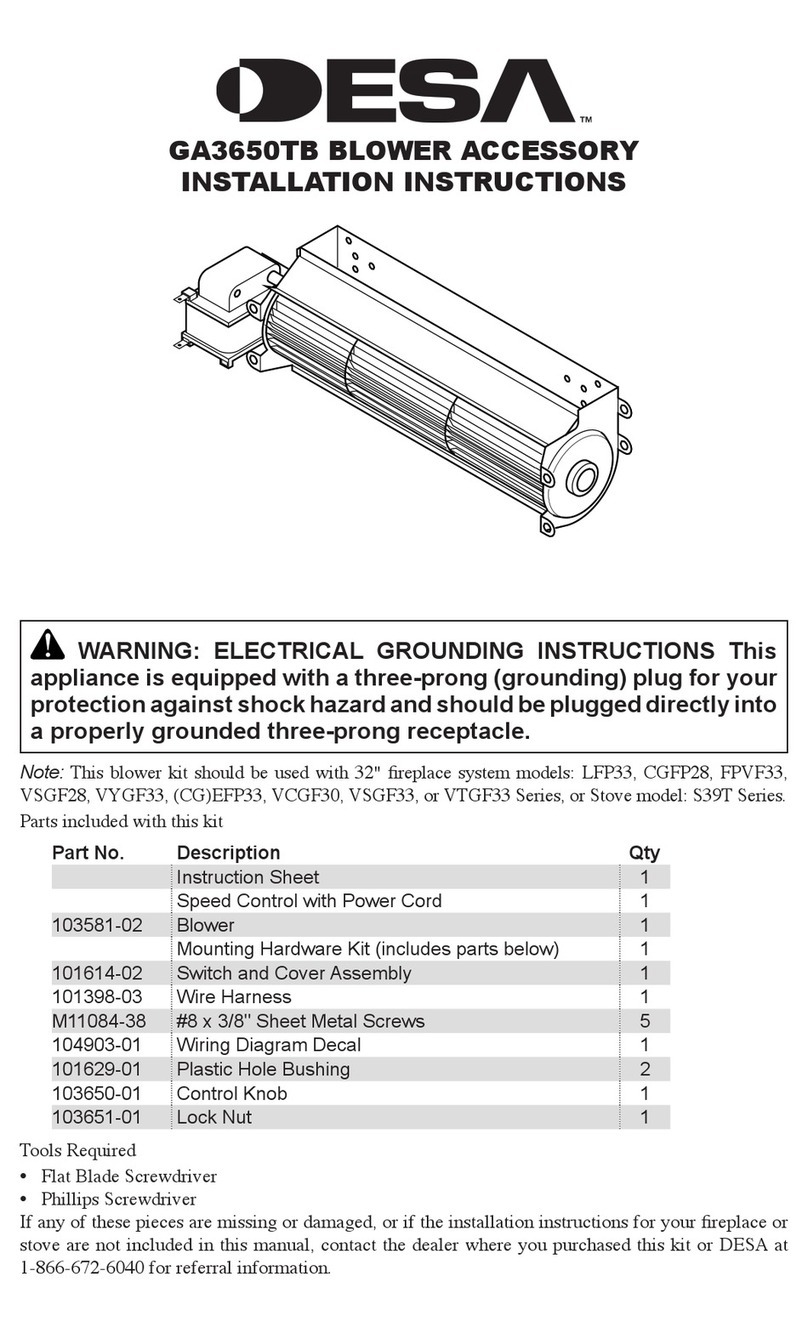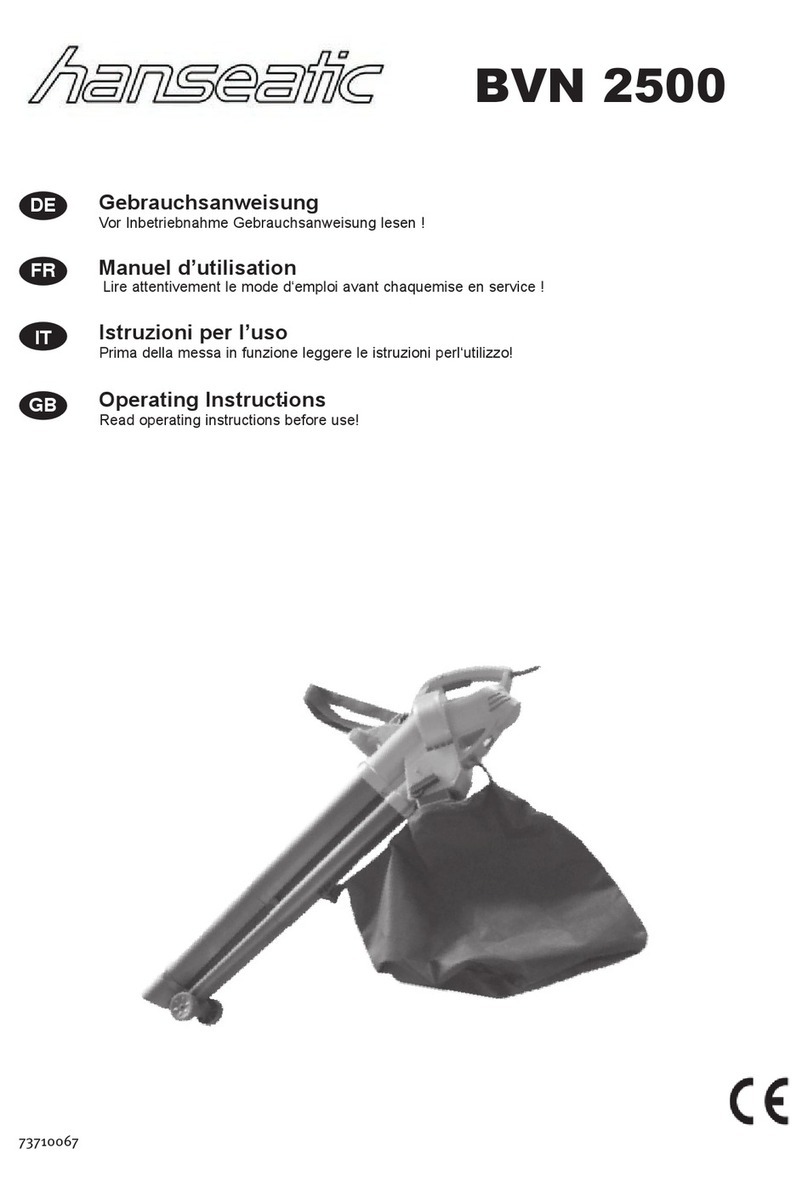
2. ASSEMBLY
WARNING! Risk of physical injury!
Cut injury when the impeller turns or the
product starts accidentally.
v Wait for the impeller to stop, disconnect the
product from the mains and use gloves before
you do assembly.
To assemble for blower use:
To fit the blower tube [ Fig. A1 ]:
NOTE: A safety switch will prevent the product from start-
ing if the blower tube 1is not installed correctly.
1. Align the grooves on the blower tube 1with the
grooves on the blower outlet 2.
2. Push the blower tube 1onto the blower outlet 2until it
snaps into place.
The blower tube is secured to the blower outlet with the
tube release button 3.
To remove the blower tube 1, push the tube release but-
ton 3and pull out the blower tube 1at the same time.
To fit the intake cover [ Fig. A2 ]:
NOTE: A safety switch will prevent the product from start-
ing if the intake cover 4is not latched closed.
1. Put the intake cover 4on the lower opening of the
garden blower and turn the intake cover 4clockwise
up to the stop (bayonet fastening).
2. Tighten the fastening screw 5.
To remove the intake cover 4, loosen the fastening
screw 5, turn the intake cover 4anti-clockwise and
remove it.
General safety warnings
Electrical safety
WARNING! Electric shock!
Risk of injury due to electric shock.
vThe product must be supplied through a residual
current device (RCD) having a rated residual
operating current not exceeding 30 mA.
Cables:
If the supply cord is damaged, it must be replaces by
the manufacturer, its service agent or similarly qualified
persons in order to avoid a hazard.
Extension cables are available from your local approved
service centre. Only use extension cables specifically
designed for outdoor use.
Use only 1.00 mm² size cable up to 40 metres length
maximum.
Minimum rating: 1.00 mm² size cable.
1 General
This annex presents safe operating practices for hand-
held mains-operated electrical garden vacuums, and
garden blower / vacuums with or without shredding
means and garden blowers.
These practices are not all inclusive. The substance
of these requirements should be provided with each
machine as appropriate and tailored to the specific
type of machine. It should also include information con-
cerning noise and vibration levels and any necessary
warnings, together with the following:
IMPORTANT
READ CAREFULLY BEFORE USE.
KEEP FOR FUTURE REFERENCE.
2 Safe operating practices for hand-held mains-
operated electrical garden vacuums, and garden
blower/vacuums with or without shredding
means and garden blowers.
2.1 Training
a) Read the instructions carefully. Be familiar with the
controls and the correct use of the machine.
b) Never allow children or people unfamiliar with these
instructions to use the machine.
Local regulations can restrict the age of the operator.
c) Keep in mind, that the operator or user is responsible
for accidents or hazards occurring to other people or
their property.
2.2 Preparation
a) Obtain ear protection and safety glasses. Wear them
at all times while operating the machine.
b) While operating the machine always wear substantial
footwear and long trousers. Do not operate the
machine when barefoot or wearing open sandals.
Avoid wearing clothing that is loose fitting or that has
hanging cords or ties.
c) Do not wear loose clothing or jewellery that can be
drawn into the air inlet. Keep long hair away from the
air inlets.
d) Operate the machine in a recommended position and
only on a firm, level surface.
e) Do not operate the machine on a paved or gravel sur-
face where ejected material could cause injury.
f) Before using, always visually inspect to see, that the
shredding means, shredding means bolts and other
fasteners are secure, the housing is undamaged and
that guards and screens are in place. Replace worn
or damaged components in sets to preserve balance.
Replace damaged or unreadable labels.
g) Before use, check the supply and extension cord for
signs of damage or aging. If the cord becomes dam-
aged during use, disconnect the cord from the supply
immediately. DO NOT TOUCH THE CORD BEFORE
DISCONNECTING THE SUPPLY. Do not use the
machine if the cord is damaged or worn.
h) Never operate the machine while people, especially
children, or pets are nearby.
2.3 Operation
a) Before starting the machine, make certain that the
feeding chamber is empty.
b) Keep your face and body away from the feed intake
opening.
c) Do not allow hands or any other part of the body or
clothing inside the feeding chamber, discharge chute,
or near any moving part.
d) Keep proper balance and footing at all times. Do not
overreach. Never stand at a higher level than the base
of the machine when feeding material into it.
e) Always stand clear of the discharge zone when oper-
ating this machine.
f) When feeding material into the machine be extremely
careful that pieces of metal, rocks, bottles, cans or
other foreign objects are not included.
g) If the cutting mechanism strikes any foreign objects or
if the machine should start making any unusual noise
or vibration, immediately shut off the power source
and allow the machine to stop. Disconnect the
machine from the supply and take the following steps
before restarting and operating the machine:
• inspect for damage;
• replace or repair any damaged parts;
• check for and tighten any loose parts.
h) Do not allow processed material to build up in the dis-
charge zone; this may prevent proper discharge and
can result in kickback of material through the intake
opening.
i) If the machine becomes clogged, shut-off the power
source and disconnect the machine from supply
before cleaning debris.
j) Never operate the machine with defective guards or
shields, or without safety devices, for example debris
collector in place.
k) Keep the power source clean of debris and other
accumulations to prevent damage to the power
source or possible fire.
l) Do not transport this machine while the power source
is running.
m) Stop the machine, and remove plug from the socket.
Make sure that all moving parts have come to a com-
plete stop
– whenever you leave the machine,
4
EN
PV3000V-20.960.01.indd 4 25.04.17 08:36






